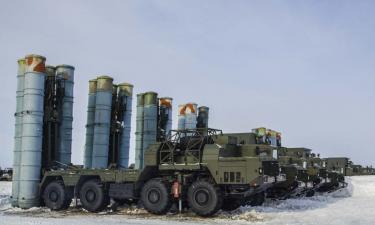Ants: Survival of the Fittest - 11 November, 2002 - News
Ants are much better organized than humans
Fire ants, Solenopsis Invicta (invincible), are ready to destroy any and all enemies, regardless of size. They attack chickens, young deer, and even the occasional curious biologist. Fire ants are tiny insects, only three millimeters long, yet they pack a punch, are unpredictable, and very aggressive.
At first, it seems that they just idle around their ant hill. However, this idling time might be used to plan well-coordinated attacks. Fire ants have become a great disaster for the American farmer. Over 30 thousand people are hospitalized every year because of the dreaded fire ant. The fire ant isn’t like other species of ants. A colony of fire ants can have up to sixty females, whereas it is typical for ants to have only one, the queen. These super fire ant colonies cannot be destroyed. Even if one queen is taken out, another is ready to replace her, and soon, there will be even more colonies with even more females.
This scheme of the fire ants contradicts the theory of biological evolution. With fire ants, the workers take care of eggs that are not genetically related to them. Evolutionary laws exclude such noble deeds. Pursuant to the theory of evolution, all eggs are laid by only one female, the so-called queen. The vast majority of her “daughters” become worker ants. Only a few females fly out of their ant hills and establish new colonies. However, super colonies do not obey to this theory. Female ants take care of all eggs, furiously attacking any creatures that dare to approach their colony.
Fire ants are not the only kind of ants that contradict to evolutionary theories. There are some ant colonies in which only one female copulates with 20 male ants. On other occasions, a female copulates only once, creating a kind of a sperm bank inside her body. This sperm bank is enough to last her entire life.
Ant colonies are extremely structured. Ants live like one single superorganism. A forced peace reigns in these colonies, a forced peace that came after a series of conflicts.
The history of ants is the history of the struggle for survival. Biologists have recently discovered very interesting ant colonies in the tropical forests. These colonies are at continuous war. Their working female ants lay eggs as well as the queen. Those ants often have ritual fights for the right to lay more eggs in the common laying ground.
A colony that does not have a queen is basically chaotically organized. Numerous fights take place all the time. These ants spend most of their time fighting, not working. When the laying of eggs is finally completed, some ants attempt to eat their enemies’ eggs.
Ancient ants have a multi-stage hierarchy. Indian ants (Herpengathos Saltator) even produce special odors, which indicate their status in the ant hierarchy. The more complicated the aroma, the more advantages an ant will have for laying eggs.The kinds of ants that have a complicated hierarchy basically live in small groups. Leptothorax ants, for example, count only ten or a hundred members in a colony. A whole colony can live in one cherry.
With most ant species, evolution has resulted in a hierarchy in which only one female lays eggs, a single queen. The worker ants do not reproduce. This has brought an organized discipline. This lack of equality is needed for the good of the colony. and working discipline. The instinct of the equal
Peaceful ant colonies grow and sometimes become very large. Soldier-ants parol the territory of their empire, destroying everything that does not run away from them. Hundreds of thousands of ants crawl out of their hills every morning, searching for insects, dead or alive. However, many of them don’t return to the colony, as they are eaten by bigger insects.
The worker ant lives about one week, but their short lives are rewarded by the fact that the queen continues to live and produce new generations of ants. With ant life, continuity is the rule, and anything goes. Sometimes, a queen will give birth to many males and just a few females. In this case, worker ants will eat one ore two hundred male larvae.
The ant colony often faces many threats and problems. Nature treats all creatures like the market economy treats the worker. When an ant colony needs to find a new place for their home, they take everything they can with them. Worker ants carry their own “sisters,” as well as ticks, cockroaches, flies, spiders, and other insects. Some of these insects pretend to be the ants’ friends, creating a specific odor that tricks the ants. These insects are able to relax in the ant hive, and the workers will take care of them.
There are even ants in America that eat a certain kind of fungus, and they cultivate this fungus in underground “greenhouses.” Some ants pick up leaves and cut them into small pieces, while others drag them inside the colony, accompanied by large soldier-ants. Other ants stand on guard, defending the workers against other insects. Female workers cut leaves and chew them inside the colony. Then, the smallest ants of the colony work inside the fungus, providing it with chewed leaves and killing parasites.
This organization brings peace and lots of food for all ants of the colony. Ants are not individualists, and evolution has organized them into asingle community. If there is law and order in a colony, a queen can live up to 20 years, producing 150 million working ants and ten thousand young females and males. Up to 50 other females will start their own new colonies. Experts calculate that up to 20% of leaves of American woods are used by ants for their underground colonies. For the time being, ants have perfected their will to survive.
&to=https://www.anomalia.narod.ru' target=_blank>Anomalia.Ru Translated by Dmitry Sudakov
Subscribe to Pravda.Ru Telegram channel, Facebook, RSS!





